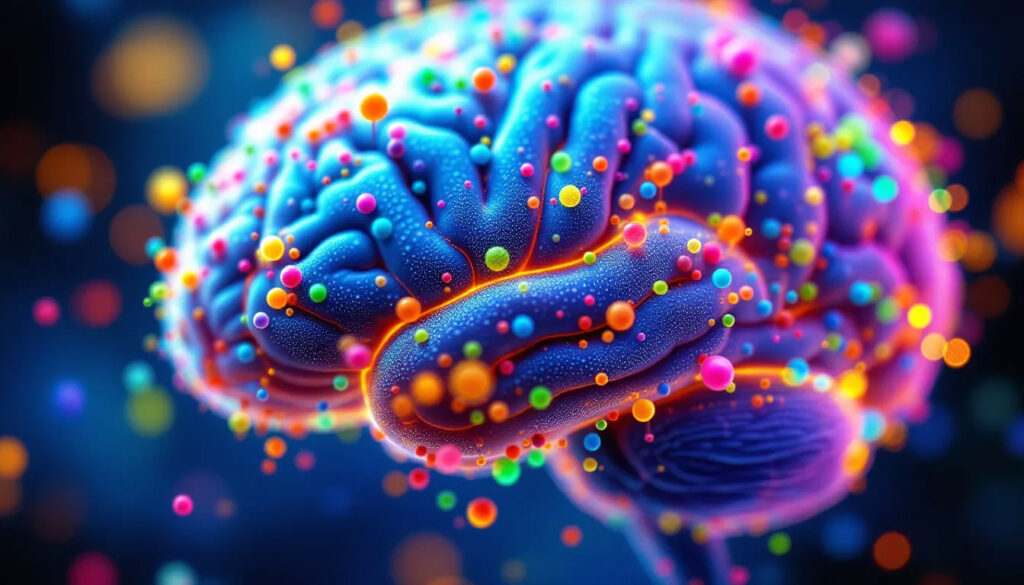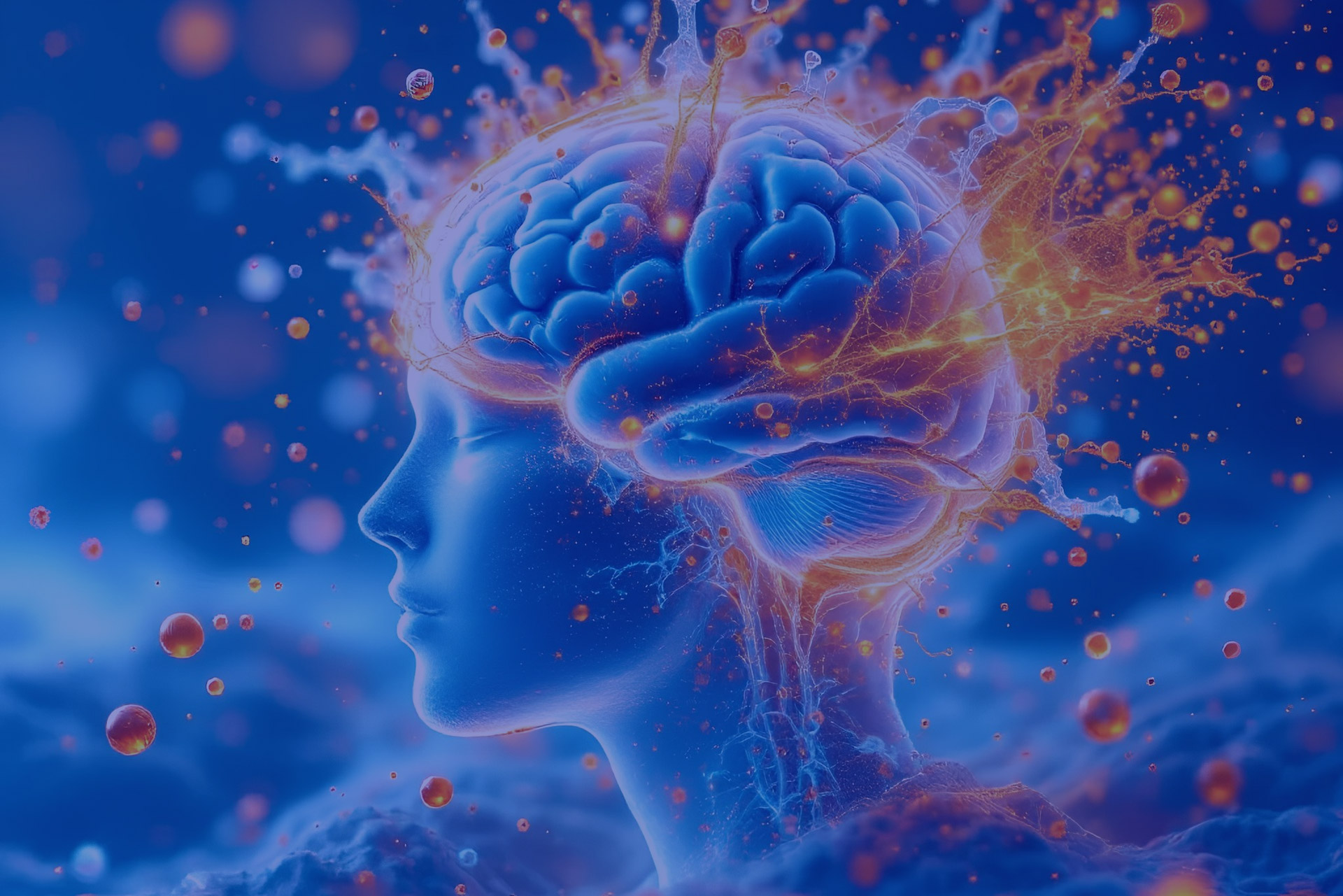Introduction
Did you know that the average person ingests a credit card’s worth of microplastics every week? It’s a startling fact, but it’s true. Microplastics – tiny plastic particles less than 5 millimeters in size – are everywhere. They’re in the water we drink, the food we eat, and even the air we breathe. And now, research shows they’re making their way into our brains.
In a recent study published in Nature Medicine, University of New Mexico Health Sciences researchers found microplastics in human brains have increased 50% over the past 8 years. They also found that people with dementia had up to 10 times as much plastic in their brains as everyone else.
As a functional medicine practitioner, I’m deeply concerned about the impact of microplastics, especially on brain health. In this article, we’ll explore how these invisible invaders are affecting our bodies, what they’re doing to our brains, and most importantly, what you can do to protect yourself.
The Rampant Growth of Microplastics
Microplastics are a byproduct of our plastic-dependent world. They come from broken-down plastic waste, synthetic clothing, cosmetics, and even car tires. These tiny particles are so pervasive that they’ve been found in the deepest oceans, the highest mountains, and even in the Arctic ice.
Recent studies suggest that the levels of microplastics in human brains and other tissues are rising at an alarming rate. For example, a 2024 study published in The Guardian found that microplastic concentrations in human tissues may be doubling every decade.
Have you ever stopped to think about how much plastic you’re exposed to every day?
The Science Behind Microplastics
Microplastics are not just tiny pieces of plastic—they’re complex pollutants that can carry harmful chemicals and toxins. They are classified into two main types:
Primary Microplastics: These are intentionally small, such as microbeads in cosmetics or industrial abrasives.
Secondary Microplastics: These result from the breakdown of larger plastic items like bottles, bags, and fishing nets.
What makes microplastics in human brains particularly dangerous is their ability to absorb and transport other environmental toxins, such as heavy metals and PFAS (per- and polyfluoroalkyl substances). These “toxic hitchhikers” can amplify the damage caused by microplastics, creating a cascade of health issues.
How Microplastics Enter the Body
Microplastics enter our bodies through three primary pathways:
Ingestion: We consume microplastics in contaminated food and water. For example, seafood, bottled water, and even table salt have been found to contain microplastics.
Inhalation: Microplastics are present in household dust and outdoor air pollution, which we breathe in daily.
Dermal Absorption: While less common, microplastics in personal care products can enter through the skin.
Studies estimate that the average person ingests or inhales tens of thousands of microplastic particles each year, increasing the risk of microplastics in the brain.
How Microplastics Impact Our Bodies
Once microplastics enter our bodies, they don’t just pass through harmlessly. They can accumulate in our organs, including the gut, liver, and kidneys. Research shows that microplastics trigger chronic inflammation, disrupt the gut microbiome, and even act as carriers for other toxins like heavy metals and PFAS.
This systemic inflammation and toxicity can lead to a host of health issues, from fatigue and digestive problems to immune dysfunction.
Could your chronic fatigue or gut issues be linked to microplastics?
How Microplastics Affect the Brain

Perhaps the most alarming discovery is that microplastics can cross the blood-brain barrier, a protective shield that normally keeps harmful substances out of the brain. Once inside, they can cause oxidative stress, inflammation, and damage to brain cells.
Here’s how microplastics disrupt brain health:
Oxidative Stress: Microplastics in human brains generate free radicals, which damage brain cells and impair cognitive function.
Neuroinflammation: Chronic inflammation in the brain is linked to conditions like depression, anxiety, and Alzheimer’s.
Neurotransmitter Disruption: Microplastics can interfere with the production and function of neurotransmitters like serotonin and dopamine, affecting mood and cognition.
Protein Misfolding: Research suggests microplastics in human brains may contribute to the misfolding of proteins, a hallmark of neurodegenerative diseases like Parkinson’s and Alzheimer’s.
A 2025 study published in Nature found microplastics in human brains of individuals with cognitive decline, highlighting the urgent need to address this issue.
Is your brain fog more than just stress?
The Gut-Brain Axis and Microplastics
The gut and brain are intimately connected through the gut-brain axis. Microplastics disrupt this relationship by:
Damaging the Gut Lining: This can lead to “leaky gut,” allowing toxins to enter the bloodstream and reach the brain.
Altering the Microbiome: A healthy gut microbiome is essential for brain health, but microplastics can reduce beneficial bacteria and promote harmful ones.
Triggering Systemic Inflammation: Gut inflammation can spread to the brain, exacerbating neurological symptoms.
Environmental Toxins Worsen the Impact
Microplastics don’t act alone. They often carry other environmental toxins, such as heavy metals and PFAS, into the body. These toxins can amplify the damage caused by microplastics, creating a “toxic cocktail” that’s even more harmful to the brain and body.
For instance, a 2024 NPR report highlighted how microplastics can act as carriers for PFAS, which are known to disrupt hormone function and damage the nervous system.
Are you unknowingly exposing yourself to a toxic cocktail?
Can We Remove Microplastics?
The good news is, yes, it’s possible to reduce the burden of microplastics in human brains and other organs. While it’s challenging to eliminate them completely, you can support your body’s natural detoxification pathways—like the liver, kidneys, and lymphatic system—to help flush out these harmful particles.
What if you could take steps today to protect your brain?
Holistic Solutions to Detox Microplastics
Detoxifying your body from microplastics requires a multi-faceted approach. Here are some detailed strategies.
Dietary Changes
Increase Antioxidants: Foods like blueberries, spinach, and walnuts combat oxidative stress caused by microplastics.
Support Gut Health: Fermented foods like kimchi and sauerkraut promote a healthy microbiome, which can help neutralize toxins.
Avoid Plastic Packaging: Choose fresh, unpackaged foods to reduce exposure.
Supplements
Binders: Chlorella, activated charcoal, and bentonite clay can trap microplastics and other toxins in the gut.
Liver Support: Milk thistle and N-acetylcysteine (NAC) enhance the liver’s ability to process and eliminate toxins.
Omega-3 Fatty Acids: Found in fish oil and flaxseeds, these reduce inflammation and support brain health.
Lifestyle Modifications
Sweat It Out: Regular sauna sessions help eliminate toxins through the skin.
Stay Hydrated: Drink clean spring water to flush out toxins and support kidney function.
Reduce Plastic Use: Swap plastic containers for glass or stainless steel, and choose natural fibers for clothing.
My Favorite Detox Treatment Solution
In recent years working with patients with a range of toxicity concerns, one product has become my go-to solution for broad spectrum detoxification. It’s particularly useful for the complexity of detoxing microplastics and associated environmental toxins.
The Quicksilver Advanced PushCatch® Detox System is a comprehensive and streamlined toxin removal protocol kit designed to support the efficient removal of toxins by supporting the body’s natural detoxification capabilities.
The ‘push catch’ concept support all three phases of detoxification. Potent nutrients and bitter phytochemicals help activate critical detoxification pathways and optimize bile flow, to mobilize or ‘push’ toxins through the body for excretion. Binding agents like charcoal and bentonite clay intercept or ‘catch’ mobilized toxins in the intestine, for elimination, preventing reabsorption.

Advanced PushCatch® Detox System
The Advanced PushCatch® Detox System is a comprehensive and streamlined toxin removal protocol kit designed to support the efficient removal of toxins by supporting the body’s natural detoxification capabilities.
Working with a Functional Medicine Practitioner is Key
Detoxifying your body and brain from microplastics isn’t a one-size-fits-all process. It requires a personalized, science-based approach that addresses your unique health needs and circumstances. This is where functional medicine shines.
As a functional medicine practitioner, I combine the best of ancient healing wisdom and modern science to help you achieve optimal health. Here’s why working with a functional medicine practitioner is the most effective way to address the dangers of microplastics in human brains:
Root Cause Approach
Functional medicine focuses on identifying and treating the root causes of illness, not just masking symptoms. Microplastics are just one piece of the puzzle—your overall toxin load, gut health, immune function, and lifestyle all play a role. By addressing these interconnected factors, we can create a comprehensive plan to protect your brain and body.
Advanced Lab Testing
To understand the full extent of your exposure to microplastics and other toxins, I use advanced lab tests that go beyond standard medical evaluations. These may include:
Toxin Panels: To measure levels of microplastics, heavy metals, and environmental pollutants in your body.
Gut Microbiome Analysis: To assess the health of your gut, which is critical for detoxification and brain health.
Hormone and Immune Testing: To evaluate how toxins are impacting your hormonal balance and immune resilience.
These tests provide a clear picture of your health and guide the development of a targeted treatment plan.
Personalized Treatment Plans
No two people are the same, and neither are their detoxification needs. Based on your lab results, medical history, and lifestyle, I’ll design a customized plan that may include:
Nutritional Strategies: Tailored diets to reduce inflammation, support detox pathways, and nourish your brain.
Herbal and Supplemental Support: Specific herbs and supplements like chlorella, milk thistle, and glutathione to enhance detoxification and repair damage caused by microplastics.
Lifestyle Modifications: Practical steps to reduce your exposure to plastics and other toxins in your daily life.
Holistic Support for Brain Health
Microplastics don’t just affect your body—they impact your brain, too. I’ll work with you to address neurological symptoms like brain fog, memory loss, and anxiety through:
Anti-Inflammatory Protocols: To reduce neuroinflammation and protect brain cells.
Gut-Brain Healing: To restore the gut-brain axis and improve cognitive function.
Stress Management Techniques: To support emotional balance and mental clarity.
Ongoing Guidance and Accountability
Detoxification is a journey, not a one-time event. I’ll be with you every step of the way, providing ongoing support, monitoring your progress, and adjusting your plan as needed. This ensures you stay on track and achieve lasting results.
What if you had a roadmap to radiant health, tailored specifically to your needs?
Conclusion
Microplastics in human brains are a growing threat to our health, but you don’t have to face this challenge alone. By understanding the risks and taking proactive steps, you can protect your brain and reclaim your health. Remember, the journey to radiant health begins with a single step. Let’s take that step together.
Take Action Today
Your brain deserves the best care. If you’re concerned about the impact of microplastics on your health, I invite you to schedule an initial consultation with me. Together, we’ll assess your situation and create a plan to protect your brain, restore your vitality, and create a healthier, happier (and smarter!) you.

Dr Josse Ford
Josse Ford is the Founder and Director of the Alchemy Radiant Health clinic in Encinitas, California. She specializes in the integration of Chinese medicine and functional medicine to treat the whole human holistically and to focus on the root cause of illness



